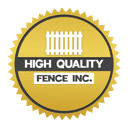Common Fence Repair Issues and Solutions in Manteca

Fences are essential for defining boundaries and providing privacy, but over time, they can encounter various issues. Whether it’s due to weather, wear and tear, or accidental damage, understanding common fence repair problems can help homeowners in Manteca address them effectively.
From rotting wood and rusted posts to leaning panels and broken gates, each issue requires a specific solution to restore the fence’s functionality and appearance. In this guide, we’ll explore these common fence repair issues and offer practical solutions to help you maintain a sturdy and attractive fence.
Identifying Rot and Decay in Wood Fences
Wooden fences, while charming and classic, are prone to rot and decay over time. This deterioration often begins at the base where the wood meets the soil, as moisture seeps in and weakens the structure. Initial signs of trouble include discolored patches and a spongy texture on the wood. It’s crucial to inspect the entire fence regularly, paying close attention to areas that stay damp longer, such as shaded spots or sections affected by heavy rain.
If you spot soft or crumbling wood, it’s important to address the issue promptly by replacing the damaged sections and applying a high-quality sealant. Regular inspections and maintenance are key to catching these issues early, preventing further damage, and extending the overall lifespan of your wooden fence.
Dealing with Rust on Metal Fencing
Metal fences, such as those made of iron or steel, are highly susceptible to rust when exposed to moisture. Rust typically appears as reddish-brown spots or patches on the metal’s surface, which can gradually worsen if not addressed promptly. To tackle this issue, start by thoroughly removing any loose rust using a wire brush or sandpaper. It’s important to clean the affected area well to ensure that no rust remains.
After cleaning, apply a rust-inhibiting primer that is designed to prevent further rust development. Once the primer is dry, follow up with a fresh coat of paint specifically formulated for metal surfaces. Regular maintenance is crucial; routinely inspect your metal fence and touch up any damaged areas to prevent rust from spreading. To further protect your fence, consider applying a protective coating that shields the metal from moisture and environmental factors, helping to extend its lifespan and maintain its appearance.
Fixing Leaning or Tilting Fence Posts
Leaning or tilting fence posts can seriously impact both the stability and visual appeal of your fence. This problem typically arises from several factors, including soil erosion, improper installation, or damage from strong winds. To address a leaning post effectively, start by identifying the root cause of the issue. If soil erosion is causing the problem, you might need to reinforce the base of the post with additional concrete or gravel to stabilize it.
For posts that were not installed correctly, you may have to dig them out, realign them, and ensure they are securely set in concrete to prevent future shifting. Regular maintenance is crucial—inspect your fence posts periodically to catch any signs of instability early. By addressing these issues promptly and making necessary adjustments, you can maintain a well-aligned and durable fence that enhances the safety and aesthetics of your property.
Repairing Broken or Damaged Panels
Broken or damaged fence panels can significantly impact both the appearance and functionality of your fence. Panels can suffer from damage due to severe weather conditions, accidental impacts, or the general wear and tear that comes with age. To begin repairs, first assess the extent of the damage. Minor issues like small cracks or breaks can often be fixed with wood glue or adhesive, providing a quick and effective solution. However, if the damage is more extensive, such as large cracks or significant splits, replacing the entire panel may be necessary.
When installing a new panel, it’s crucial to match it to the existing fence in terms of style and material to ensure a cohesive look. Secure the new panel firmly with screws or nails to maintain the fence’s stability and overall appearance. Regular inspections and maintenance are essential to catch and address any damage early, ensuring your fence remains both functional and attractive.
Addressing Gate Alignment and Functionality
A gate that’s misaligned or doesn’t function properly can cause considerable frustration and inconvenience. Common issues with gates include sagging, which can make it difficult to open or close smoothly, and gaps that might allow unwanted elements like pests or debris to enter. To start, inspect the hinges for any signs of rust or looseness, as these can contribute to misalignment. Realign the gate by adjusting the hinges or replacing them if they’re beyond repair.
Additionally, check for any obstructions or debris that might be blocking the gate’s movement, such as overgrown plants or accumulated dirt. If the gate is sagging, adding support brackets or tightening existing screws can provide additional stability. Regularly maintaining and making necessary adjustments to your gate will help ensure it remains functional and aligned with the rest of your fence, preserving both its appearance and effectiveness.
Solutions for Cracked or Warped Boards
Cracked or warped boards can significantly impact both the aesthetic appeal and structural integrity of your fence. These problems typically arise from prolonged exposure to the elements, such as intense sun, heavy rain, or extreme temperature fluctuations. Cracks in the wood can often be addressed by applying wood filler, which will restore the board’s surface and prevent further damage. Warped boards, however, usually need to be replaced to maintain the fence’s overall stability and appearance.
To mitigate future warping, it’s beneficial to apply a protective finish or sealant to your wooden boards, which acts as a barrier against moisture and UV rays. Additionally, ensuring proper installation and using high-quality, treated wood can help minimize the risk of such issues. Regularly inspecting your fence and conducting timely repairs will not only keep it looking its best but also ensure its longevity and functionality.
Maintaining Fence Stability in Extreme Weather
Extreme weather conditions, such as high winds, heavy rain, and snow, can significantly impact the stability and integrity of your fence. To safeguard against these elements, start by making sure that your fence posts are securely anchored in concrete, as this will provide a solid foundation that can withstand strong winds and shifting ground. Additionally, ensure that the base of your fence is properly graded to prevent water from pooling around the posts, which can lead to erosion and structural instability.
Regularly inspect your fence for any signs of damage or weakness and reinforce these areas as needed. Overhanging trees and dense vegetation can also pose a risk during storms, so trimming them back can prevent them from causing unnecessary damage. By taking these proactive measures, you can help ensure that your fence remains sturdy and functional, protecting your property and maintaining its appearance through all seasons.
Handling Insect Infestations in Wooden Fences
Insect infestations, especially from termites or carpenter ants, can lead to severe damage to wooden fences. Key signs of an infestation include wood that sounds hollow when tapped, the presence of visible insects, and the accumulation of discarded wings or frass (insect droppings). Addressing an infestation promptly is crucial; treat the affected areas with insecticides designed for wood, or consider enlisting the help of professional pest control services for a thorough inspection and treatment.
Regularly inspecting your fence for any signs of insect activity can help catch problems early. Additionally, applying preventive measures, such as using protective coatings and ensuring proper drainage, can minimize the risk of future infestations. Avoiding direct soil contact with wooden parts can also help keep insects at bay.
Replacing Missing or Damaged Fencing Sections
When sections of your fence are missing or damaged, it can impact both its function and appearance. To replace a missing section, start by measuring the dimensions and matching the new section to the existing fence in terms of style and material. For damaged sections, assess whether they need partial or full replacement. Secure the new or repaired section with appropriate fasteners and ensure it aligns correctly with the rest of the fence. Proper installation and matching materials will help maintain the continuity and integrity of your fence, enhancing both its durability and visual appeal.
Choosing the Right Materials for Repairs
Selecting the right materials for fence repairs is crucial for ensuring long-lasting results. When choosing materials, consider the type of fence you have and the specific repair needs. For wooden fences, select high-quality, treated wood to resist rot and insects. For metal fences, opt for rust-resistant materials and protective coatings. It’s also important to match the new materials with existing ones to maintain the fence’s appearance and structural integrity. Investing in quality materials and consulting with professionals when needed can help ensure that your fence repairs are both effective and durable.
Addressing common fence repair issues promptly is essential for maintaining the functionality and appearance of your fence. Whether you’re dealing with rot, rust, or structural damage, understanding the specific problems and their solutions can help you keep your fence in top condition. Regular maintenance and timely repairs not only extend the life of your fence but also enhance its overall look and performance.
If you’re experiencing fence issues or need professional assistance with repairs, contact High Quality Fence today. Our expert team is ready to help you with all your fencing needs. Reach us at 1112 N. Main Street #171, Manteca, CA 95336, call 209-815-9015, or email info@highqualityfence.com.


